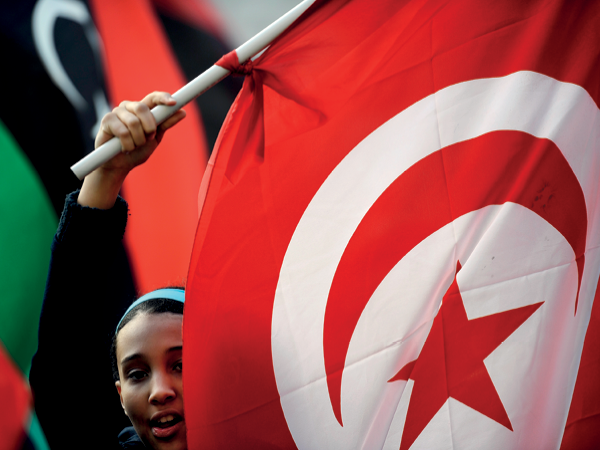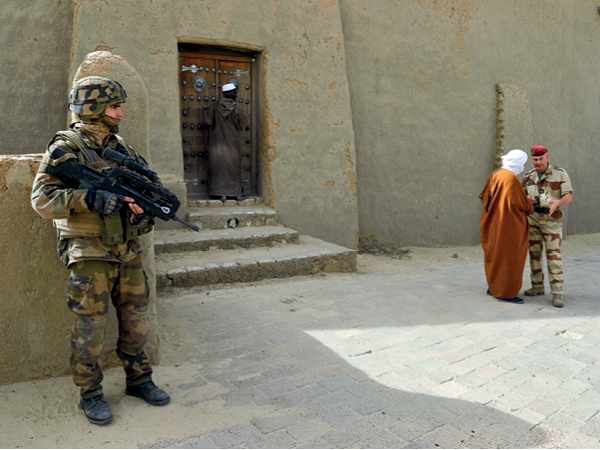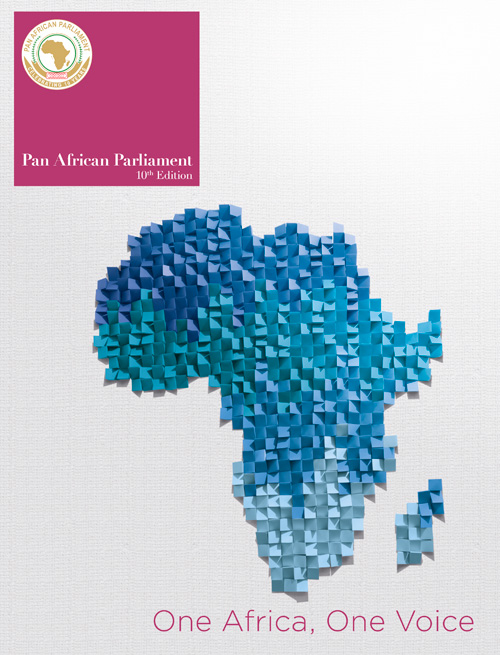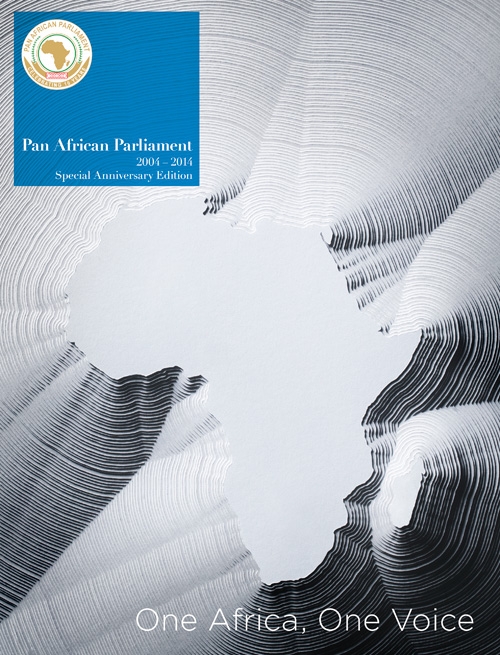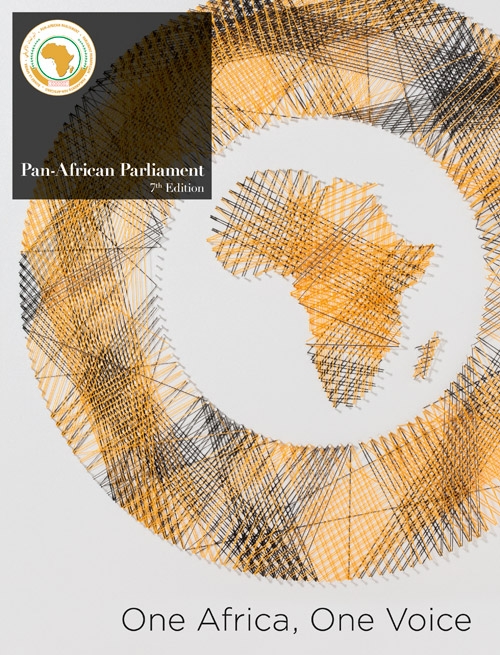
Côte d’Ivoire
By the time the PAP’s fact-finding mission arrived in Abidjan, Côte d’Ivoire in July 2011, conflict between those loyal to the former president, Laurent Gbagbo, and the current leader, Alassane Ouattara, had subsided.
The delegation even noted positivity in the country about the future of HE President Alassane Ouattara. During its stay, the mission saw security personnel take control of the streets, creating a sense of calm.
While the delegates were unable to see members of the executive as they were on a retreat, they were able to meet with a variety of officials and stakeholders who contributed to their successful mission.
The delegates’ report stated that President Ouattara’s appointment of heads of various security agencies (such as the republican forces, the gendarmerie and national police) made an immediate impact on peace and security in the country. However, it recommended that any extra appointments to the hierarchy of these agencies come from all sectors in the country to ensure representation.
Encouragingly, investigations into atrocities perpetrated during the conflict were under way and Ouattara had insisted that both sides of the political divide be held accountable if found guilty. He also started the reconciliation process by appointing previous opposition members in key parliamentary positions. For example, the former Prime Minister under Gbagbo accepted the role of Chairperson. The mission encouraged this move and stressed that transparency was required to inspire confidence among the country’s stakeholders.
The mission recommended that the schedule for parliamentary election in December 2011 be maintained and that all parties be given an unfettered opportunity to campaign across the country. It also recommended that Côte d’Ivoire join organisations such as the PAP and the Economic Community of West African States.
To consolidate democracy, the mission recommended an independent electoral commission, effective national civic education institution, enhancing the participation of women in government and a constitutional watchdog to enforce fundamental human rights. After its assessment, the mission stated it would be possible to restore Côte d’Ivoire’s economy to its former status as an economic model for Africa. The country would need international support and should pursue a sustainable development programme within the context of the UN’s Millennium Development Goals.
Saharawi Arab Democratic Republic
In April 2011, Ahmed Boukhari, representing the Polisario Front, appealed to the UN to ensure that negotiations between Morocco and his liberation movement over control of the Saharawi Arab Democratic Republic (SADR) move forward.
The situation of the Saharawi people in the Western Sahara – human rights violations and the urgent need for a referendum – and the issue of the country’s decolonisation, captured the attention of the PAP’s Committee on Co-operation, International Relations and Conflict Resolution. A fact-finding mission was sent to the SADR from 11–16 July 2011.
The delegation noted that Morocco proposed granting the SADR special autonomous status within the kingdom. This plan received the support of the US and French governments as an end to the conflict and suffering of the Saharawi people (more than half of which were living in refugee camps in Algeria). To date, Morocco had not lived up to the terms of the 1991 UN-supervised agreement, which called for a free and fair referendum to determine the fate of the territory.
A series of resolutions by the UN Security Council and the UN General Assembly, as well as a ruling from the International Court of Justice, reaffirmed the right of the people of Western Sahara to self-determination.
The SADR is currently recognised by more than 70 countries and is a member of the AU and the only colony of the union
However, both France and the US blocked the Security Council from enforcing the resolutions as they saw a need to strengthen the Moroccan monarchy to act as a bulwark against communism and radical Arab nationalism during the Cold War and more recently as an ally against Islamist extremism.
The Moroccan plan for autonomy could not bring peace to the region. Their offer did not make allowance for independence, something that the majority of Saharawi people favour.
The SADR is currently recognised by more than 70 countries and is a member of the AU and the only colony of the union. The delegation felt strongly that Saharawi people’s right to a referendum should not be negotiable. Furthermore, the delegation recommended that the PAP:
- Should ensure the SADR issue is prominent on all AU summit agendas.
- Urge AU Member States to impose appropriate leverage to force the Moroccan regime to abide by UN mandates.
- Commend the Algerian government for their continued support of the Saharawi people.
Libya
What started as a peaceful protest in eastern Libya on 15 February 2011, escalated into an armed confrontation between Libyan government forces and protestors. The conflict attracted international attention and was placed before the UN Security Council, which adopted Resolution 1970 (2011) and 1973 (2011).
However, neither resolution quelled the violence and in May 2011, after a presentation by the AU Peace and Security Council Commissioner, the PAP sent a fact-finding mission to Libya to gather information on the situation.
From 6–10 June 2011, the mission visited Tripoli. All delegates were struck by the effects of Nato military action, in particular: the number of refugees fleeing to the border; the number of abandoned vehicles on the roadside due to fuel shortages; food shortages and the number of pupils suffering from mental disturbances.
During their stay, delegates noted that hundreds of bombs and missiles were dropped and fired in Tripoli. They reported:
- The situation was worsening daily on both sides of the conflict.
- The number of wounded and dead was alarming and on the rise.
- Private and public properties had been destroyed.
- Civilians were attacked and killed.
- Black civilians were mistaken for mercenaries and attacked and tortured.
- As Libyans were fighting each other, the situation could be viewed as a civil war.
- Nato had deviated from the Security Council’s objective to protect civilians. In fact, its actions had killed thousands of civilians.
At the time of writing the report, the National Transitional Council was in control of most of Libya and the AU and UN had recognised it as the country’s legitimate authority. However, of great concern was the fact that the AU lacked a united approach to Africa’s issues. The mission mentioned it was not surprised that the AU had been marginalised by Nato Member States in terms of the conflict in Libya.
The report recommended that the AU take the lead in helping Libya find a peaceful solution. Additional recommendations included allowing Libyans to decide the future of their state democratically and that the PAP should be involved to reinforce national unity.
Finally, the report advised that the PAP act timeously on conflict situations in Africa. In Libya’s case, the mission arrived three months after the conflict began, while European and US missions had visited Libya within weeks of the conflict starting.
Tunisia
The January 2011 revolution in Tunisia led to the departure of President Zine El-Abidine Ben Ali. Due to its peaceful nature, it was referred to as the Jasmine Revolution.
From 10–15 June 2011, the PAP sent a mission to Tunisia to gauge the situation in the country after the Jasmine Revolution.
After meeting with a range of officials, former Tunisian PAP representatives, leaders of journalist unions in the country and heads of various political parties, the mission assessed that while Tunisia had the opportunity to rebuild its democratic architecture after Ben Ali’s departure, it faced several political and socio-economic challenges such as:
- Political opportunists, who took advantage of the leadership vacuum (the number of political parties increased from 51–100 post revolution).
- A lack of leadership structure among the youth who staged the revolution.
- A difficult economic phase because institutions that were destroyed had to be rebuilt. Crimes (looting, burning down factories, hijacking) committed by freed prisoners had to be curbed and investment projects started in 2008 had been put on hold.
- A war in neighbouring Libya, with whom Tunisia had enjoyed a healthy trade and tourism relationship, meant that fewer international tourists were visiting Tunisia. The result was another source of income being reduced.
Professor Mahmoud Ben Ramadan, representative of the Movement of Renewal and its Economic Committee Chairman, recommended drafting a new constitution as soon as possible and preparing for elections. All other political party leaders agreed that the election of a new government was vital as the acting state had no constitutional legitimacy to make decisions.
The election of a new government was vital as the acting state had no constitutional legitimacy to make decisions
It was clear to delegates on the PAP mission that the role of the AU and the Parliament was critical in the democratisation process. Recommendations were made that the AU and PAP be more proactive and responsive to events in Africa.
To conclude the report, the mission recommended that the PAP should:
- Urge the AU to assist Tunisia in their goal to achieve democratic governance.
- Send an election observer mission for the 23 elections.
- Appeal for urgent economic support in order to alleviate unemployment and poverty and to avoid a counter-revolution.
Mali
During the PAP’s Seventh Ordinary Session in May 2012, a resolution was adopted to send a fact-finding mission to Bamako in the Republic of Mali the following June, in light of the humanitarian, security and institutional situation.
The crisis in Mali can be traced back to 2007 to the re-election of President Amadou Toumani Touré. At this point, all semblance of democracy fell away and there was general corruption, nepotism and vote-catching. The state of the army was equally worrying – it was in complete disarray, with outdated and poor quality equipment, internal divisions and a breakdown in the chain of command.
However, it was the 22 March 2012 coup d’etat, led by Amadou Haya Sanogo and staged by soldiers from the Kati Garrison, that was the immediate cause of the current Malian crisis. Sanogo seized control of the presidency, dissolved the state institutions and suspended the constitution. Following this, there was general looting, rape, destruction of property and murder.
The coup caused the AU and the Economic Community of West African States (ECOWAS) to impose sanctions against Mali – with a prerequisite that these could only be lifted when constitutional order was restored in Mali.
In response, Sanogo and his supporters formed the National Committee for the Restoration of Democracy and State (CNRDRE) and, through ECOWAS mediation, pledged to restore order as well as adopt a Framework Agreement for its implementation. Article 1 of this Framework called for the official resignation of President Touré, which occurred on 8 April 2012. An interim president was named.
The PAP mission only visited Bamako as it was too dangerous to travel to northern Mali. While the north had been a place of general vulnerability, armed robbery, terrorist activities and trafficking, the immediate cause of the crisis was linked to the occupation of the areas of Azawad following the March coup. The three groups claiming power in the north were:
- The Azawad National Liberation Movement, who demanded the independence of the North of Mali (including Timbuktu, Kidal and Gao).
- Ansar Dine, a jihad movement from the AQMI Islamists that intended to create an Islamic Republic.
- MUJAO, Movement for Unity and Jihad in West Africa.
Clashes between those seeking power resulted in the loss of many lives and the destruction of property, including demolishing heritage wealth in Timbuktu.
In Bamako, the PAP mission members were able to speak to a wide variety of experts, from political and cleric to civil society to gather information.
Most importantly they saw the security and humanitarian situations in Mali as serious. Urgent action was required. Economically, the gross national product was very low and the suspension of budgetary assistance from previous partners of Mali was aggravating the situation. The army was in urgent need of restructuring and required equipment.
The mission members felt that the Malian people should be the focus of the conflict resolution and that the legal measures that were in place against Mali were penalising the peaceful population far more than the political elite, who were largely responsible for the crisis.
There was a sense of preparation for war as the division between the two countries was so entrenched and politicised
Other parties were actively trying to help. The mission mentioned, in particular, the UN who was working to resolve the institutional, humanitarian and security crisis. However, since the start of the crisis, the UN had suspended development aid to Mali.
The EU had also suspended Malian development and budgetary assistance since the coup in March. The mission noted that the EU was ready to resume the suspended programmes once they could see signs of stability.
Considering the above, the mission’s recommendations were as follows:
- To urgently organise an inclusive national dialogue between all Malian socio-political strata.
- Put in place a government in accordance with the recommendations of the Framework Agreement between ECOWAS and the CNRDRE.
- The removal of the military from Malian politics.
- The need to secure the transitional organs.
- The reformation of the Malian army and definition of the role of CNRDRE during the transition.
- A roadmap that could be evaluated by all concerned stakeholders.
- The need for a climate of trust to secure economic operators and foreign investors.
- The need to listen to Azawad groups.
- A call to the international community to assist Malian authorities to fight against the different movements of destabilisation in the north of Mali.
- The need for the PAP to sensitise the European Parliament to the plight of the country’s people.
Sudan and South Sudan
The PAP was alarmed by the escalating aggression between the sister states Sudan and South Sudan. Tensions had risen since the signing of the 2005 Comprehensive Peace Agreement (CPA) and the peaceful secession and independence of South Sudan in 2011.
The PAP resolved to send a fact-finding mission to Sudan from 3–8 September 2012 and South Sudan from 10–14 September 2012. Mission delegates were able to meet with a range of people – from government officials to members of civil society and media groups – to gather opinions and information. Most importantly, met with the AU High Level Implementation Panel (AUHLP), a major force trying to facilitate prolonged negotiations on secession-related issues in the Sudan.
The PAP mission delegates noted that the war in Sudan was one of the longest in the history of Africa, with disastrous consequences that continued to be felt. Sudan and South Sudan shared a lot: a connection of more than 15 roads, the Nile River, oil pipelines and common languages.
It was in their interest to coexist. Since the separation, threats to people in both countries were escalating – with security topping the list. Tensions were amplified by the reluctance of Sudanese armed forces and Sudan People’s Liberation Army (SPLA) to redeploy from contested areas. Continued disagreements remained over the Abyei area and whether it belonged in Kordofan (northern Sudan) or greater Bahr el Ghazal (South Sudan), the shared border areas and oil issues. While both countries agreed to the borders being delineated when Sudan achieved independence on 1 January 1956, each party believed in different border areas. This is because the 1956 map did not exist, says the AUHLP and senior officials in the South Sudanese government. In use were administrative or tribal maps drawn up prior to 1956.
As this border line straddled oil-rich areas it was the single biggest challenge to any peaceful settlement. Any sustainable settlement needed to take into account the livelihoods of the nomadic tribes, whose livelihood depends on their seasonal migration.
While both countries claimed to want to reach a settlement with help from the AU and the PAP, there was a sense of preparation for war as the division was so entrenched and politicised. The mission witnessed destruction of life and property from military action.
Soon after the PAP mission left South Sudan, the presidents of the two countries, Omar al-Bashir and Salva Kiir Mayardit, signed a series of agreements in Addis Ababa. On 27 September 2012, the two countries agreed that oil exports from South Sudan would resume, a deal was reached for a demilitarised zone between borders and a cessation of hostilities. However, no agreement was reached on who controlled the Abyei Area.
In light of the above, the PAP’s mission recommended:
- Parties involved in the mediation process should use all avenues to urgently find solutions for the two countries.
- Sudan and South Sudan should unconditionally accept the buffer zone, commit to the cessation of hostilities and withdraw their armed forces in compliance with the UN Security Resolution and the Roadmap of the AU Peace and Security Council.
- Each country should create sensitisation programmes to assist reconciliation between southerners as well as northerners.
- No politicisation of the nomadic tribes’ annual migrations in search of food and water for their livestock should occur.
- Both countries should institute policies ensuring the protection and free movement of citizens from either country, in keeping with international humanitarian law.
- The International Organisation for Migration should facilitate the voluntary repatriation of the remaining 100 000 South Sudanese who were still living in the North.
In conclusion, the mission stated that the inter-dependence of both countries was clear, and that they could prosper through peaceful coexistence. However, war would impoverish both countries and render a huge land mass of Africa ungovernable.


